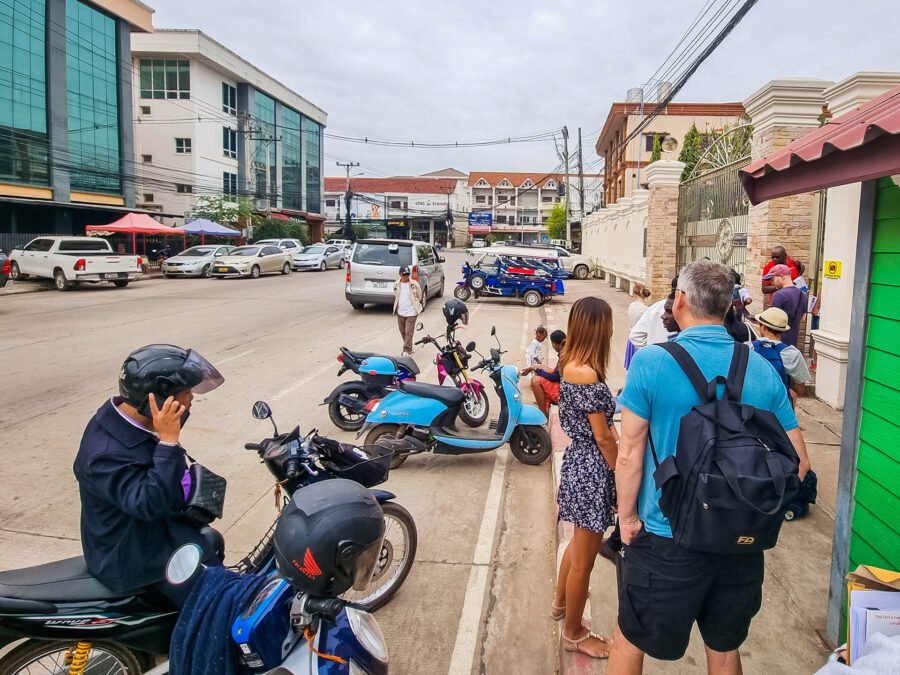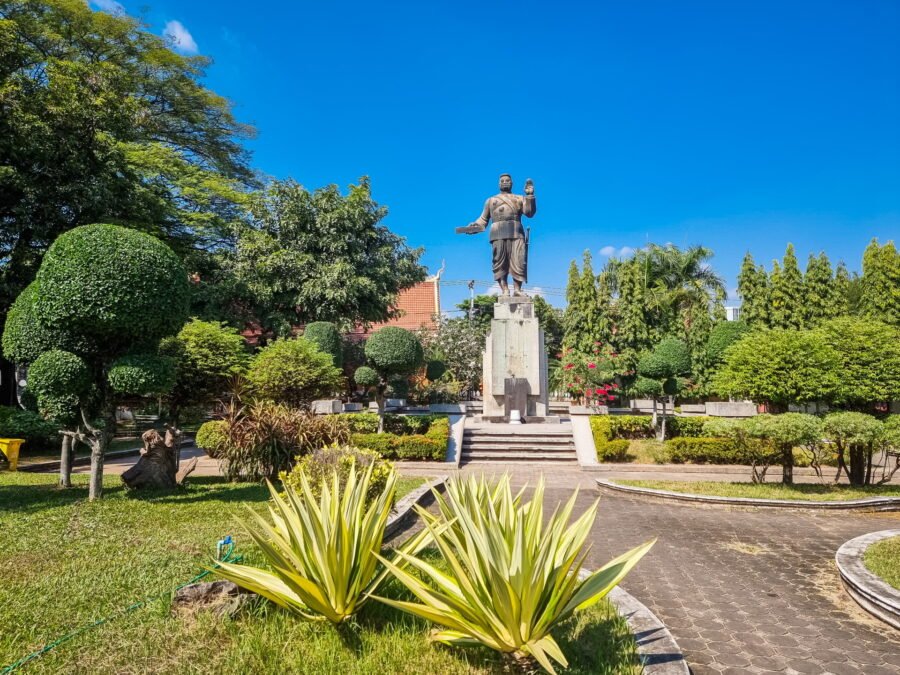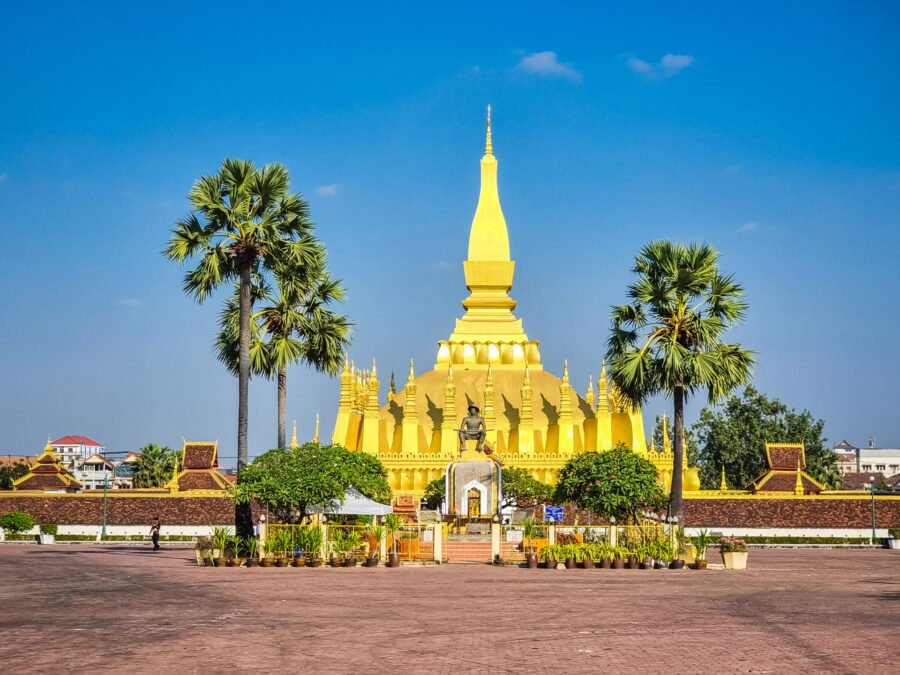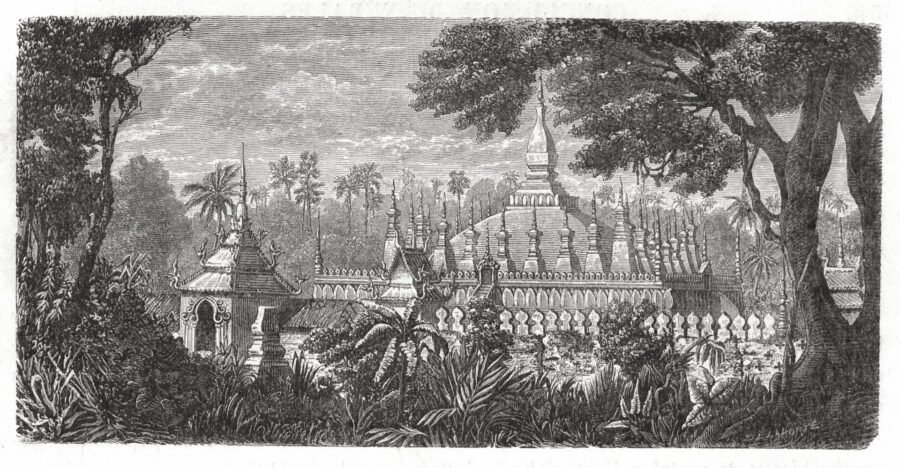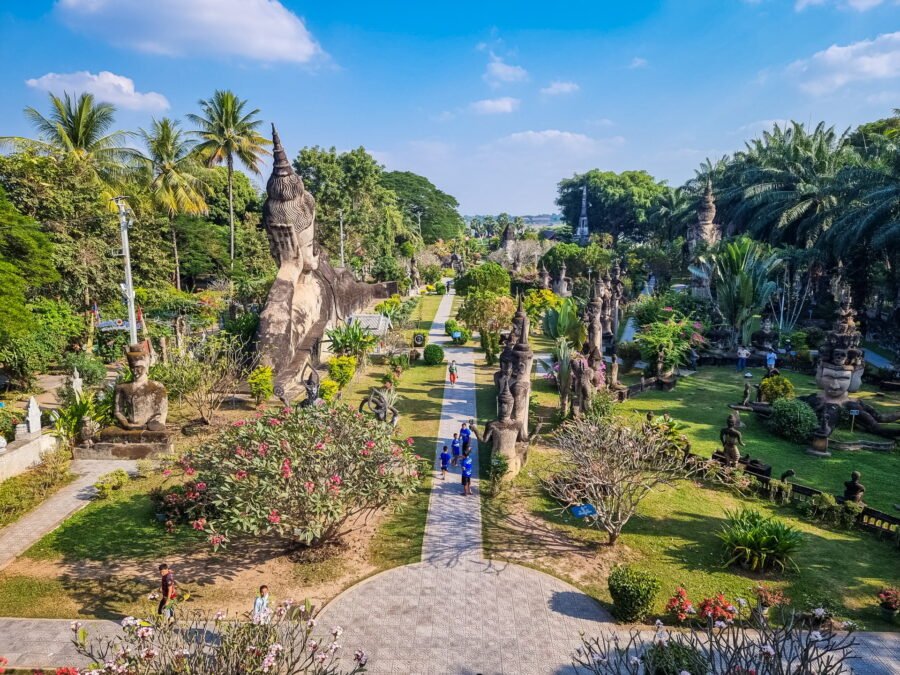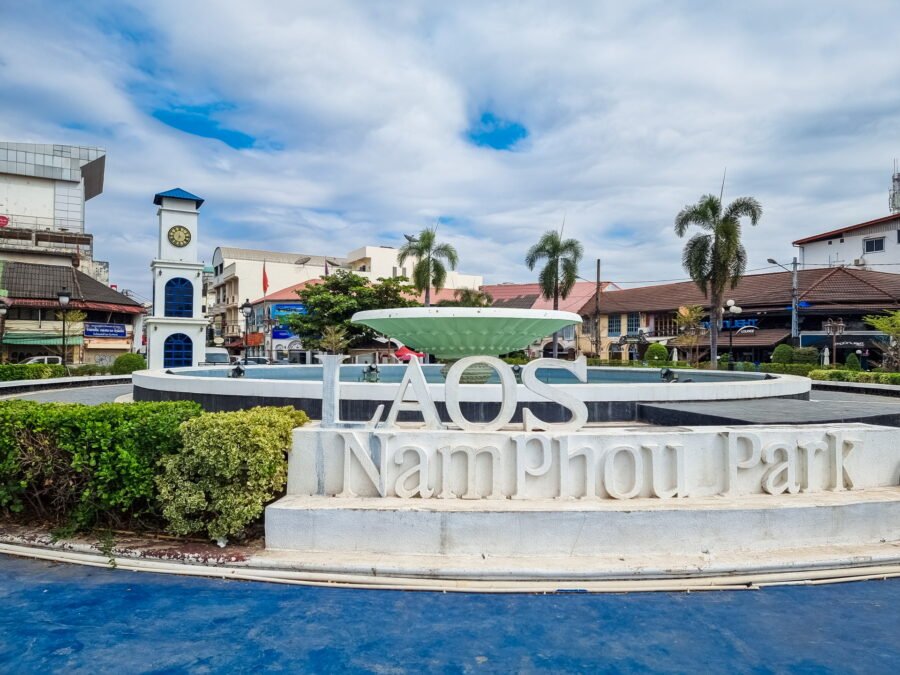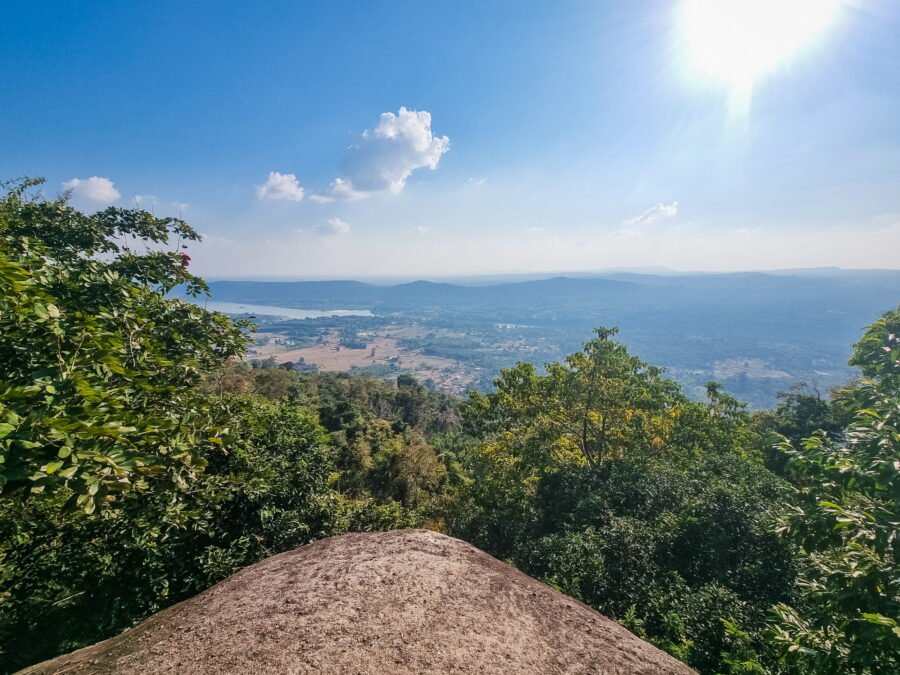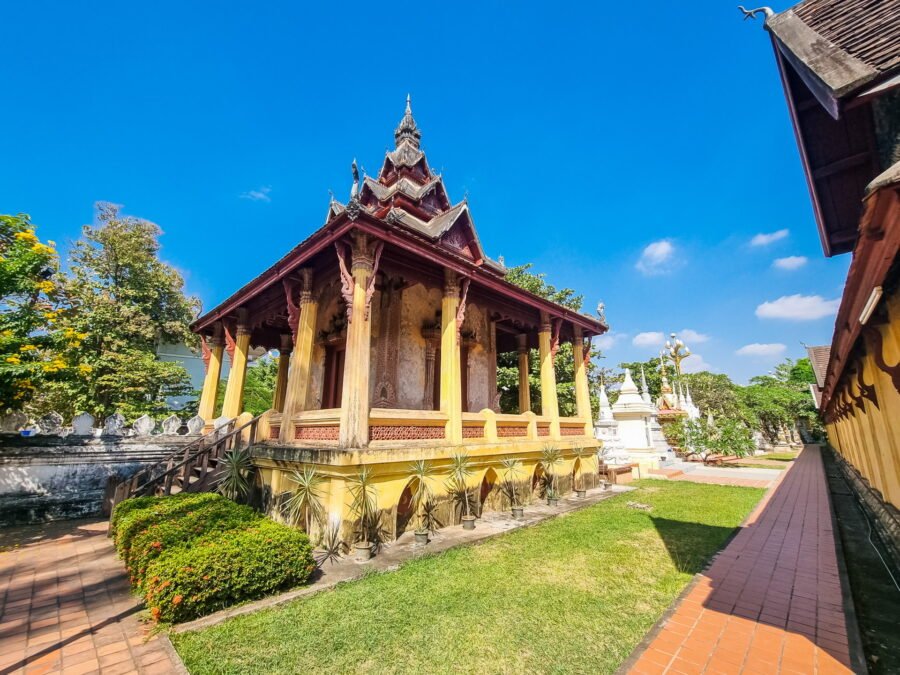
If you dig a little into the archives of this blog, you will find that I have already explored Vientiane, the capital of Laos, more than a decade ago. The opportunity arose to go back to this city to renew my visa. Usually, I would go to Savannakhet, my usual choice, but after reading recent reviews of the embassy, I realized that it has become more strict and unfriendly. So, I took the opportunity to go and rediscover Vientiane.
In addition, my approach to destinations has evolved over the years, and until then I had not really written an article summarizing the main points of interest in the capital of Laos (one of the articles simply related 5 reasons to visit Vientiane without detailing the sites to see). This unexpected return gave me an opportunity to look again at the must-see sites in Vientiane and to give you a report.
History and background
As with many countries, Vientiane has not always been the capital of Laos. While the kingdom of Lan Xang (whose name translates to "Kingdom of a Million Elephants") was founded by Fa Ngum in the mid-14th century (only 3 years after the founding of Ayutthaya, which would become a great rival), its first capital was Luang Prabang.
It was not until the reign of Setthathirath in the mid-16th century that the capital was transferred to Vientiane. Over the centuries, Vientiane experienced several invasions, notably by the Burmese and the Siamese (Thai). When the Lan Xang kingdom broke up in 1707, Vientiane became a small independent kingdom for a time, encompassing part of present-day Thai Issan.
General Chakri, the future King Rama I and founder of Bangkok, took control of the city in 1778 to make it a dependency of Siam. Following the rebellion of King Anouvong in 1827, the city was razed by the armies of the kingdom of Rattanakosin, the other name for Siam, and annexed to the latter. It remained so until the establishment of the French protectorate in 1893.
This latter period left a significant mark on Vientiane, with remaining colonial buildings visible here and there, but also a French cultural influence, still visible today. The current name of the city is also the transcription given by the French. Vientiane was previously known to the Laotians as "Viang Chan", which can be translated as "fortified city of sandalwood".
Laos gained independence in 1954 and Vientiane remained the country's capital, and since then it has seen continued growth and development, especially since the 2000s. However, despite its status as the capital, Vientiane, with "only" 1 million people, retains a generally peaceful and relaxed atmosphere, far from the hustle and bustle that one might find in other major cities in Southeast Asia.

That Dam Stupa or the black chedi, is probably one of the rare survivors of old Vientiane (despite being relegated to a simple "roundabout", it dates from the 16th century)
Historical and Cultural Sites
Due to calendar constraints and the need to have two working days to obtain my visa (compared to only one in Savannakhet), I found myself with literally 6 days to wander around the capital (including one more than originally planned due to postponed public holidays, in fact, if the latter falls on a weekend, such as a Sunday, Monday will then also be a public holiday).
It's more than I really need, but it allowed me to comfortably cover the capital's essential sites, including excursions outside the city.
To locate the different sites and indicate what makes up the old town of Vientiane, here is a map of my own:
Wat Phra Kaeo
I started with the inseparable Wat Phra Kaeo, located next to the presidential palace. As I already mentioned in my article about this temple 10 years ago, some of you may recognize this name from its famous namesake in Bangkok, the Wat phra kaew, housing the Emerald Buddha.
The term "Vat" in Laos is equivalent to "Wat" in Thailand, meaning "temple" and "Phra Kèo", its local variant to refer to the famous statue. So I'll give you a guess, the precious relic, today sitting in the enclosure of the Bangkok Royal Palace, was indeed present in this temple in Vientiane in the past. And not just a little, since it remained there for more than two centuries, from the founding of Vientiane until the Siamese domination (to see its entire journey, I refer you to the Buddha Wikipedia page)


The temple's tumultuous history dates back to 1565, when the original temple was built to house this iconic statue. Unfortunately, conflicts with the Siamese led to its destruction twice, in 1778 and 1828. As a result, its current version is a reconstruction started in 1936 by the French. Based on the original plans established a century earlier under the reign of Anouvong, which were found by the French School of the Far East, the current architecture therefore takes up the codes of the 19th century temples.
After its reconstruction, Vat Phra Kèo first logically served as a place of worship, before being converted into a museum in the 70s. Inside, there is a collection of Buddhas, many of them bronze, and some sacred art (photos are forbidden inside, so I can't illustrate what it looks like). Outside, a gallery surrounds the temple, displaying a series of Buddha statues, most of them also bronze and some dating mainly from the 18th century, as well as a stone Buddha from the 9th century.

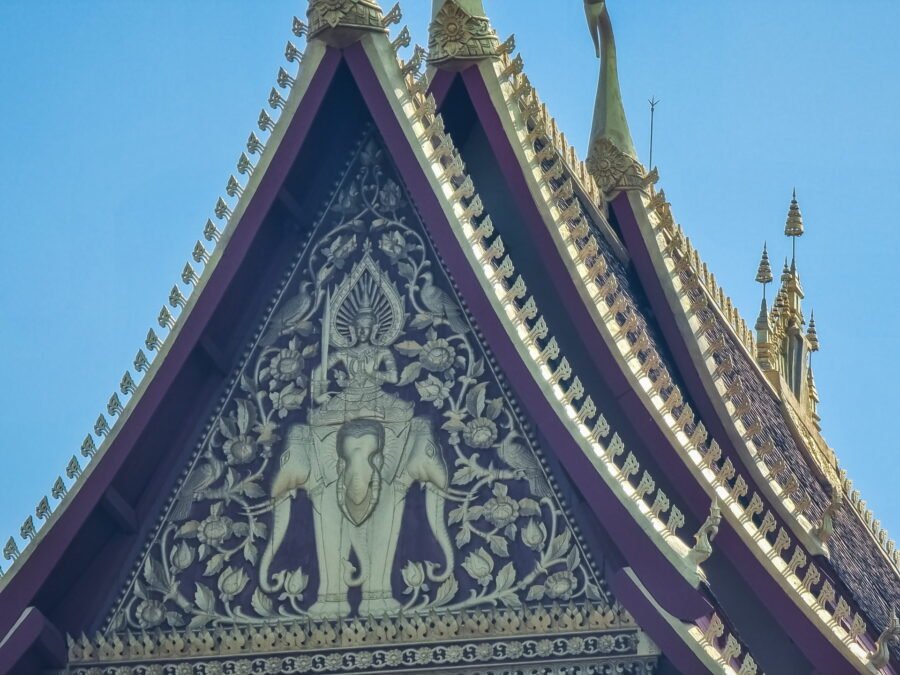



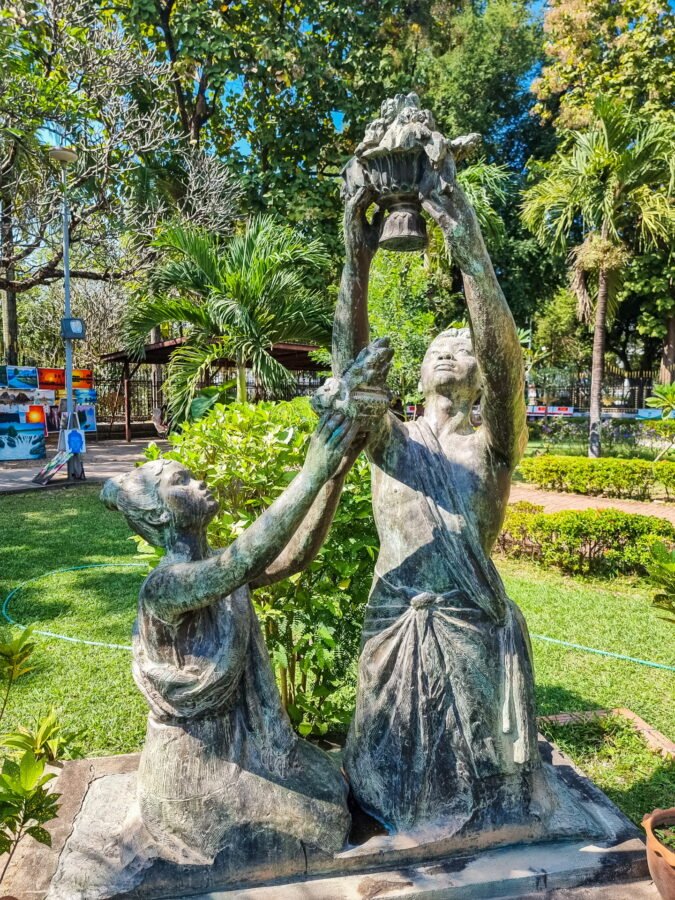
Vat Si Saket
Le Vat Sisaket is one of the few temples to have survived the Siamese invasion of 1828. Built in 1818 under the direction of King Anouvong, it is the oldest temple in the city. One theory is that it was largely inspired by Thai constructions and was therefore spared. Arriving in front of the entrance to the site, you will first discover a pretty garden, flanked by two chedis on each side.




On the left stands a "Ho Tai", a square bookstore of Burmese inspiration. This building, intended to house sacred manuscripts - unfortunately lost during the sacking of the city - has a particularity: it extends both inside and outside the temple enclosure, overflowing onto Lane Xang Avenue.
To the right, the kuti, the monks' residences, stretch out. Their architecture, on stilts and extending in length, reminded me of a surprising mix between Japanese aesthetics and a French farm (don't ask me why...) that I found very photogenic.
Once you enter the cloister surrounding the main temple building, you are surrounded by a host of Buddha statues, of different constructions (terracotta, bronze, wood) and periods ranging from the 15th to the 18th century.e century to the 19th centurye century. Most striking are the thousands of niches, each housing at least two miniature statuettes. Although the walls have lost some of their rich floral decoration, a few fragments remain, and a colorful section offers a glimpse of their former splendor.


The central shrine is surrounded by ornate openings to great effect. Inside, photos are forbidden, but you will find beautiful frescoes on the walls, as well as a group of statues in the background, where locals (and Thai visitors for that matter) still come to pray. It was not too crowded and I really enjoyed returning to this temple, having retained its timeless charm. This visit reminded me why Wat Sisaket remains one of the most precious sites in Vientiane.
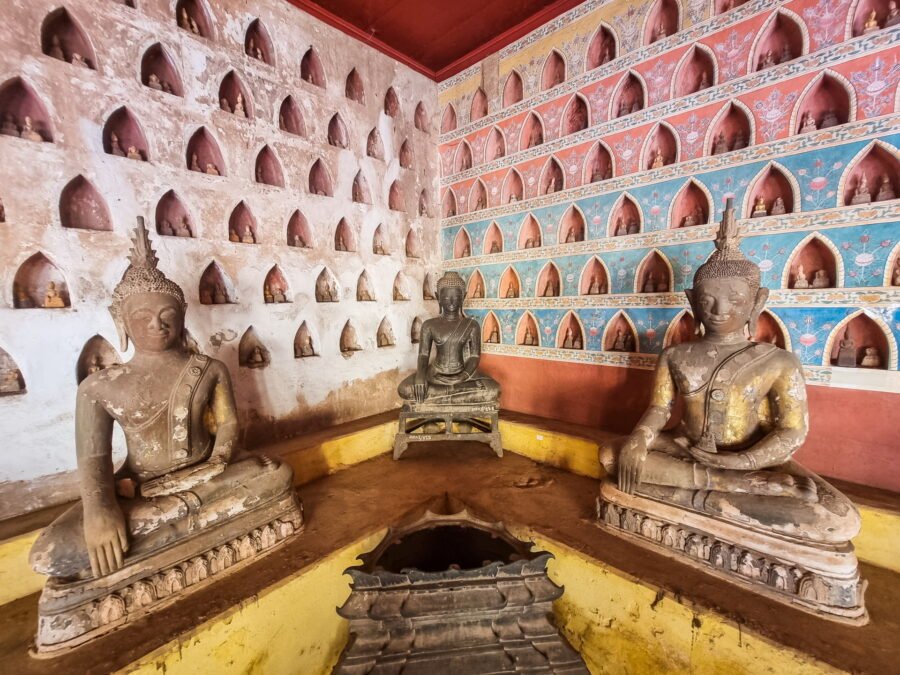



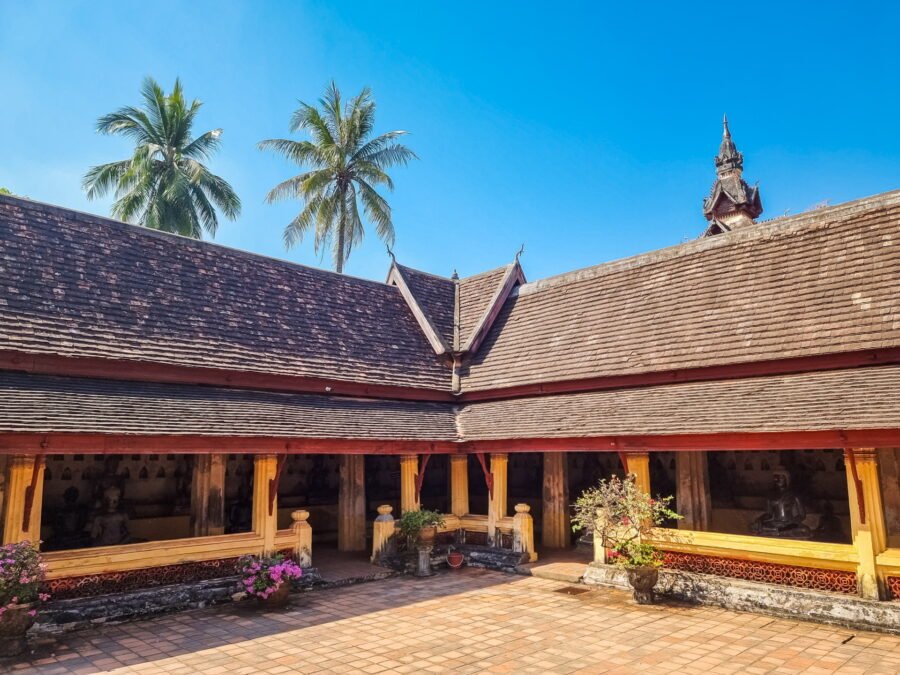

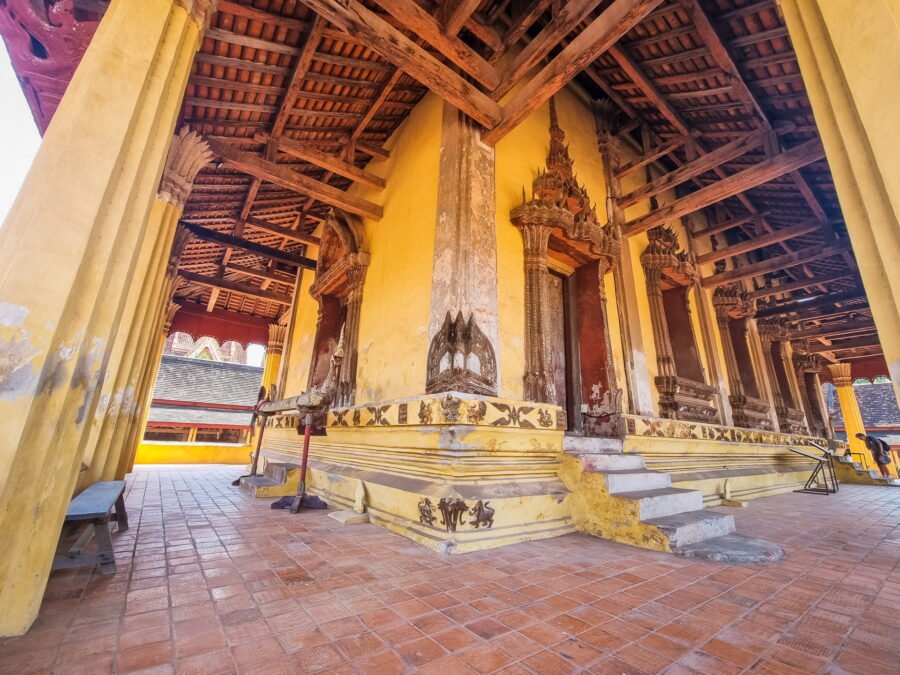
Wat Simuong
Less than a kilometer from Vat Sisaket, I headed towards the Wat Simuong (sometimes spelled Wat Si Muang), a temple that I already knew because of its proximity to the hotel Heuan Lao Guesthouse, where I had stayed during my previous visit to Vientiane.
Although the temple is a more recent construction, it ranks alongside That Luang as one of the most revered religious sites in Vientiane. This is because while the shrine as it stands is a reconstruction following its destruction in 1828, there are records of a temple on this site as early as 1540, 20 years before Vientiane was even founded as a future city. Furthermore, it is at the heart of the city's historic area.
As I walked around outside, I witnessed a scene that is so common in Thailand, a family getting a monk to bless their car! Yes, that is a common thing around here! Around the main structure, which stretches over 30 meters, I noticed several buildings decorated with a particular imitation of wood, a feature that I had not noticed the previous faith.
Behind the long chapel there is what looks like the remains of an old brick chedi, the only vestige testifying to an older past.

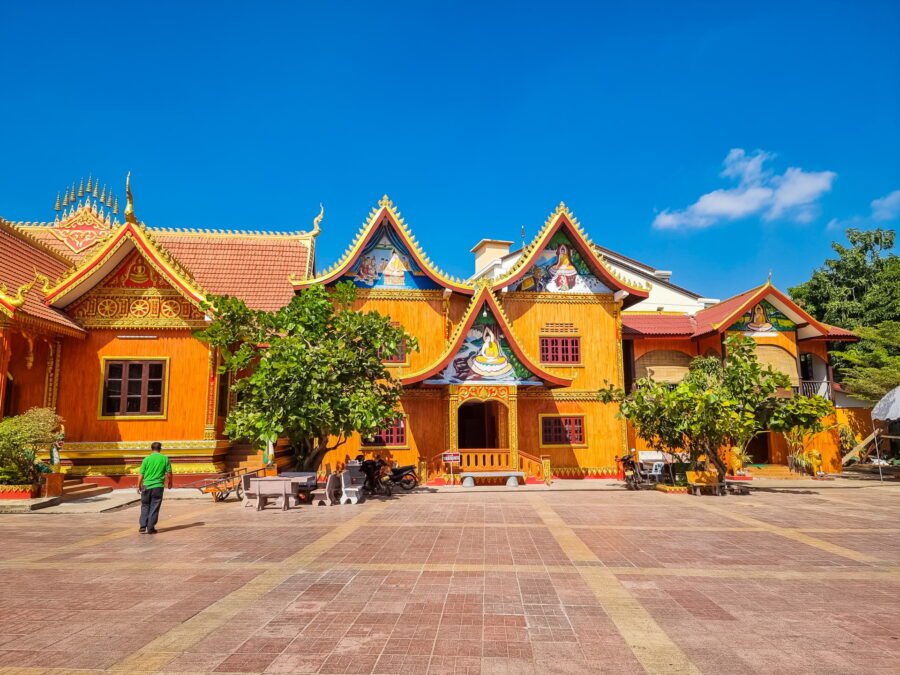



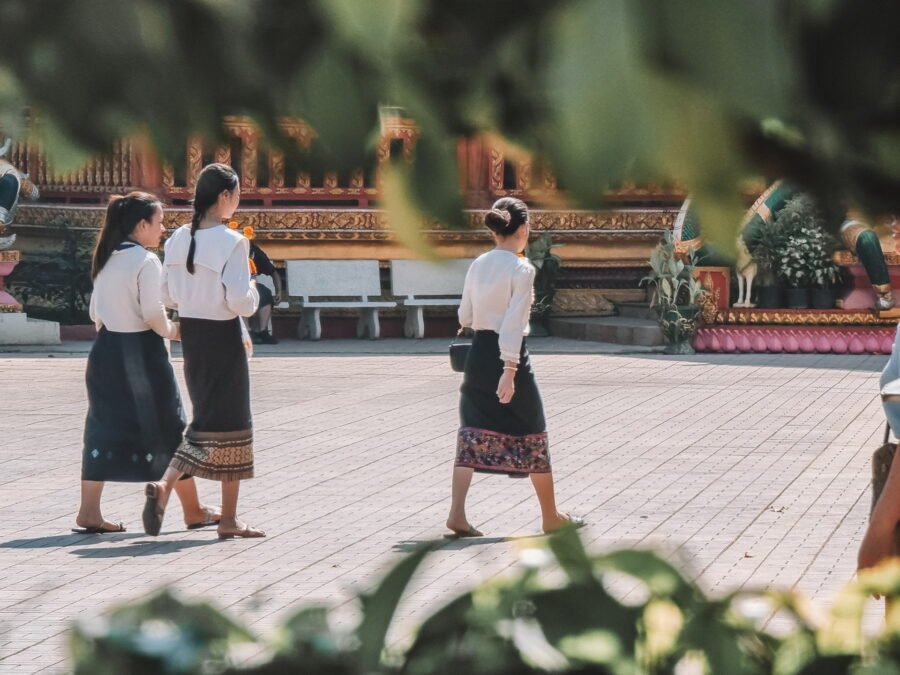
Inside, the temple has the particularity of being divided into two rooms. The first room, richly decorated in red and gold, often hosts a monk ready to offer blessings. The back room houses the large main altar, essentially composed of a multitude of Buddha statues. In the center is an imposing terminal covered in gilding, probably of Khmer origin.
This is where you will see all the sacredness of the place, the atmosphere is marked by devotion, with many locals coming to present offerings in the form of fruit platters, floral decorations and candles. I stayed there for a good 10 minutes to observe and take some photos, also enjoying the freshness of the place.
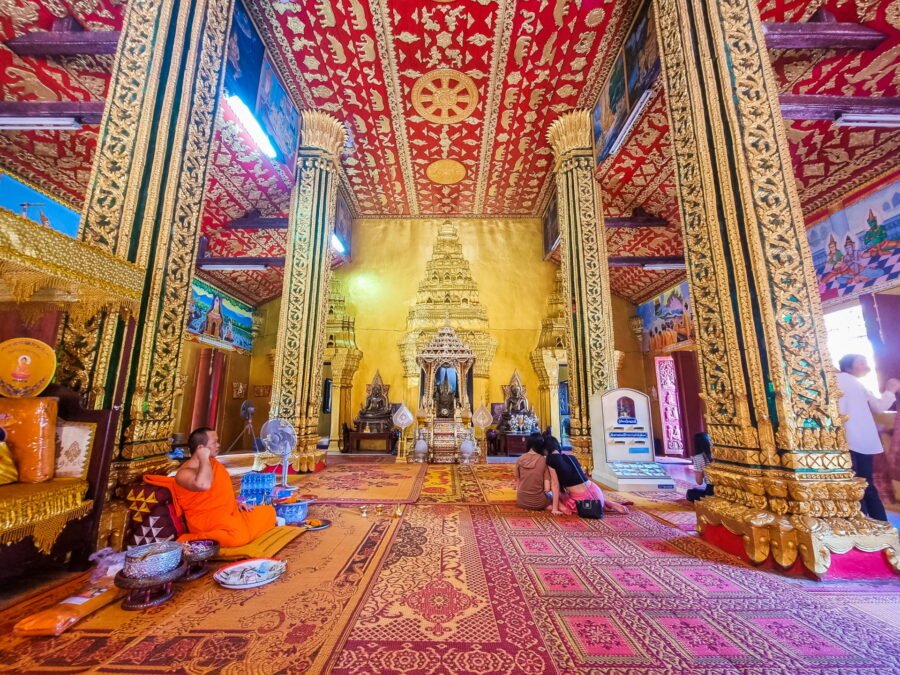


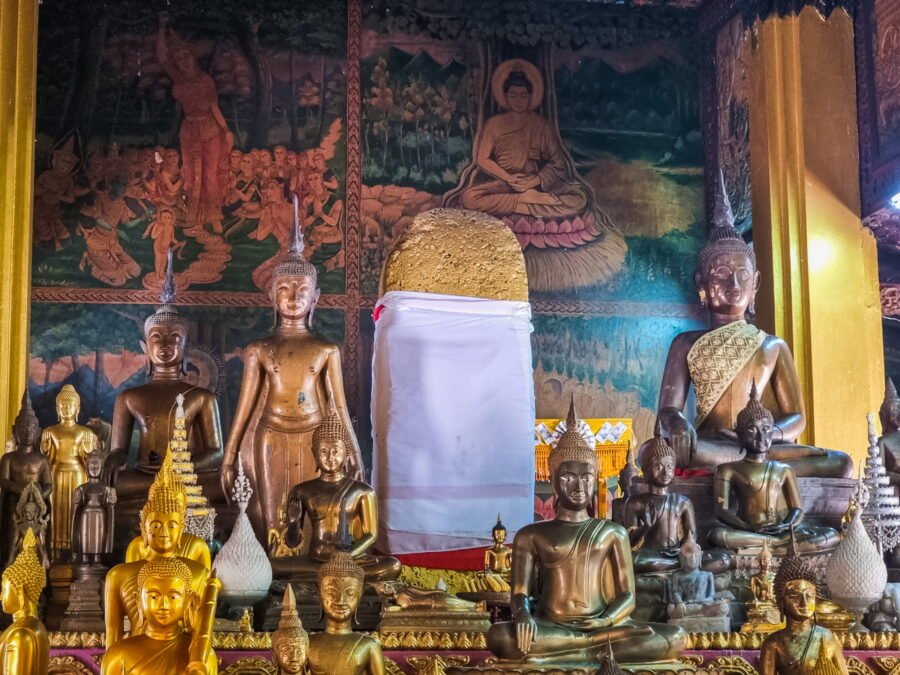


You may also like...
– I won’t put it aside, because it doesn’t deserve a dedicated paragraph, but note that you have two secondary attractions next to Vat Simuong. First of all, 150 m before the back entrance of the temple (through which I arrived), you have the new sacred pillar of the city (annotated Hor Luk Mueang on Google Maps), which was not yet completely finished during my previous visit and completed shortly after in 2013.
The latter symbolises the heart of the city, with the pillar inside said to house the protective guardians. Shrines like this are commonly worshipped by locals who ask for good fortune and health, but also serve as a guarantor for a prosperous city. The previous site was lost following the destruction of the city in 1828, but excavations in 2007 found traces of the original site, hence its current location.
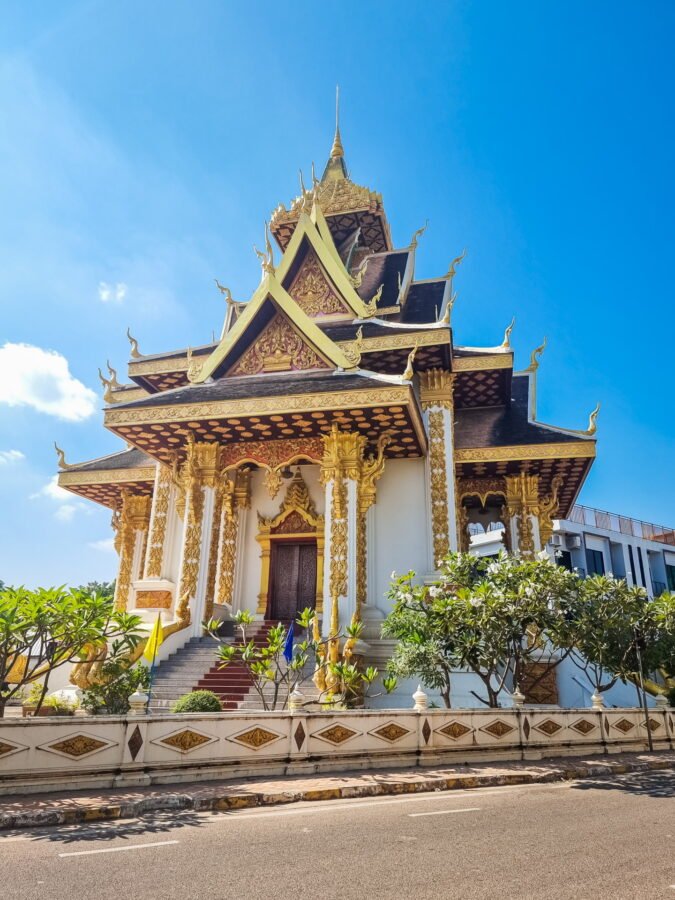

– In front of Vat Simuong, you have a small park laid out between two arteries. A bit of greenery is always welcome, but its appeal lies above all in the presence of an imposing bronze statue of the Laotian king Sisavang Vong (1885-1959), the penultimate sovereign of Laos (his successor was overthrown by the communist movement of the Pathet Lao).
As an anecdote, just after my visit to the temple, I tried the local Italian restaurant, "Il tavolo Vientiane", located in a small street opposite the park. After my good meal, when I reached the main street, I recognized the yellow facade (on the side) of the old house located on the edge of the road, realizing that it is the same street where Heuan Lao Guesthouse is located, which is even the neighboring establishment of the restaurant!
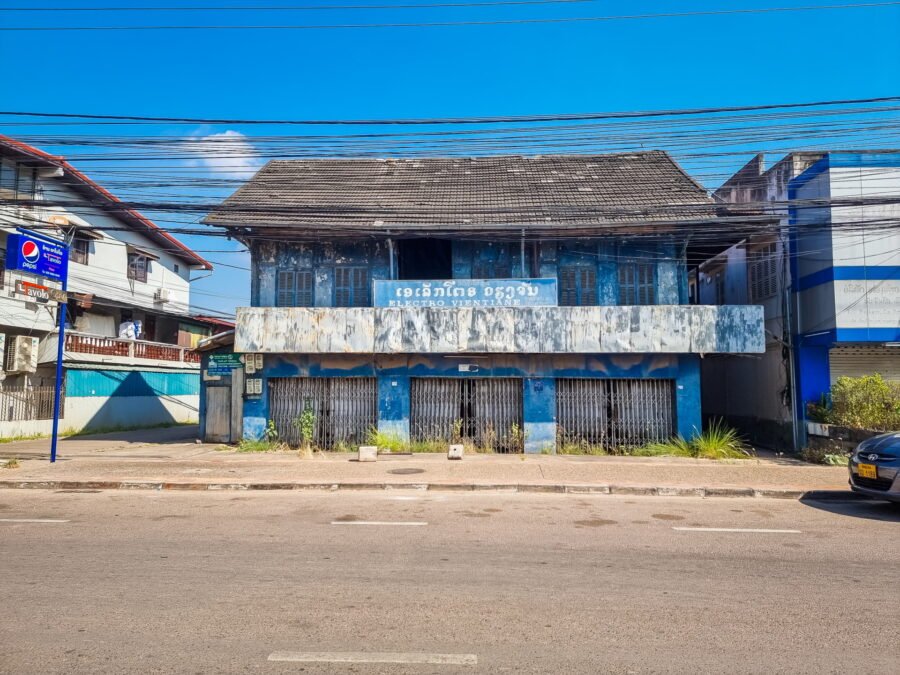
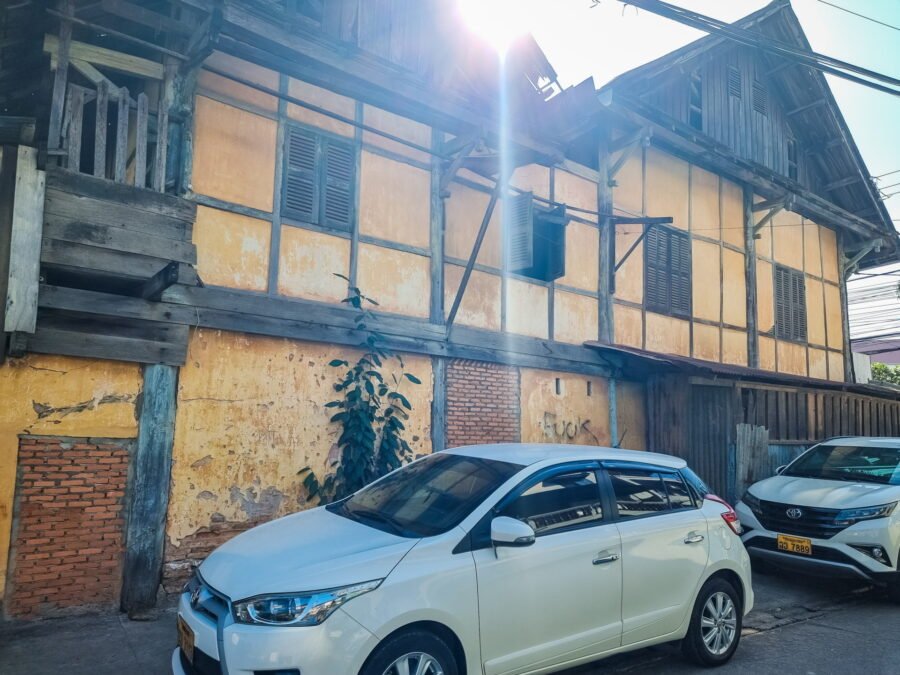
Patuxai
The next step took me to the famous Laotian "Arc de Triomphe", the Patuxai (also spelled Patuxay), which can be translated as "Gate of Victory". As I already mentioned in my article dedicated to Patuxai, Most of the construction took place in the 60s (between 1957 and 1968 to be precise), in memory of the victims of the Second World War and the war of independence against France.
At that time, the country was still a (constitutional) monarchy and the monument was referenced as Anousavali (memory). The latter had never been completed, firstly due to a lack of materials, but also because of the Vietnam War, of which we forget that Laos would be one of the biggest collateral damages. Furthermore, the victory of North Vietnam would result in support and victory for the local Communist Party, the "Pathet Lao", which took power in Laos in 1975, renovating and renaming the monument with its current name to mark their victory.
What I can say is that I immediately notice a change since my last visit. However, I couldn't define at the time what was different. It took me a few minutes to realize that there are no more palm trees and the flowers that decorated the edges of the fountain. The garden surrounding the Patuxai is essentially reduced to a green lawn...
The building itself seems unchanged from the outside, but here too, I will discover a big change when visiting the interior. As I am curious, I wanted to return to the top of this Arc, which is accessible at a charge.
On the first intermediate floor, I notice that the souvenir shop with its raw and gray walls has given way to an exhibition room, with white walls, and above all, a big difference, a room that is now air-conditioned! There are photos and explanatory panels on the chronology and important dates relating to Vientiane and the construction of Patuxai.
Going up another floor, I find myself in a large room, again air-conditioned, with a few signs mainly promoting the must-see sites of Laos, notably the UNESCO World Heritage site of Luang Pranbang city.
Continuing the climb, I rediscover the spiral staircase that gives access to the small observation point with a 360° view of all of Vientiane. If 12 years ago I had met few people there, this time there were quite a few visitors, mostly locals and even a few monks.



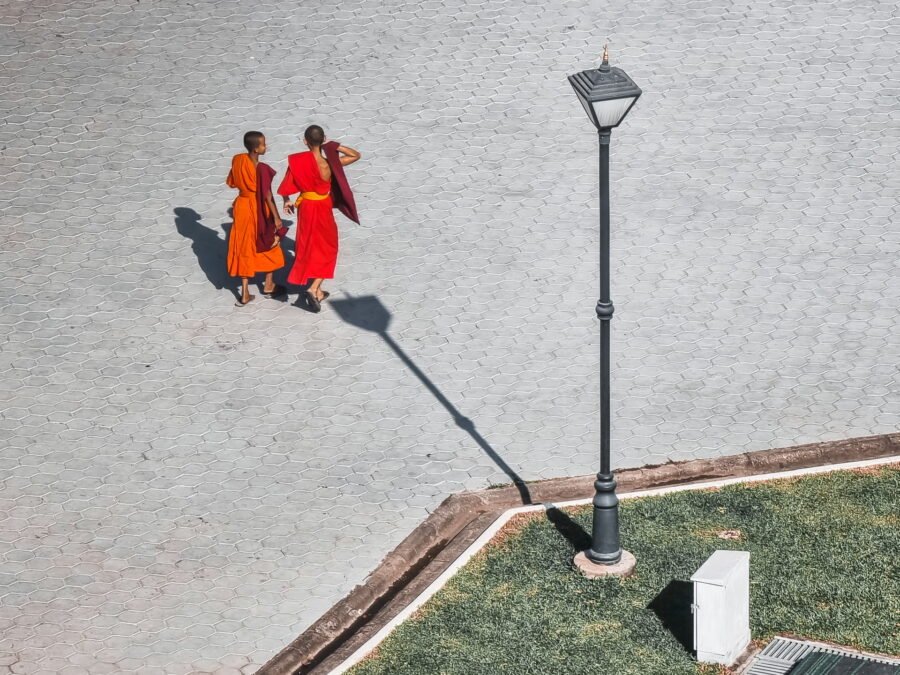


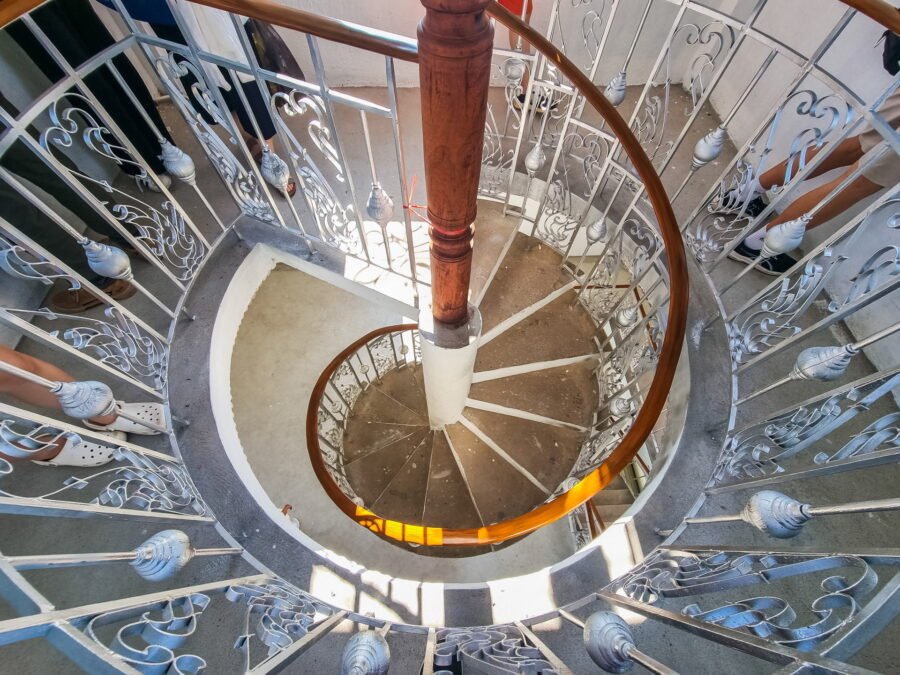


Given the significant changes, I have no regrets about coming back to visit and being inside. Even if I don't consider the view "fantastic", it's always interesting to get some height to admire a city. Just to give you an idea of the evolution, here are some photos with on the left, 12 years ago, and how it was the last time I was there.


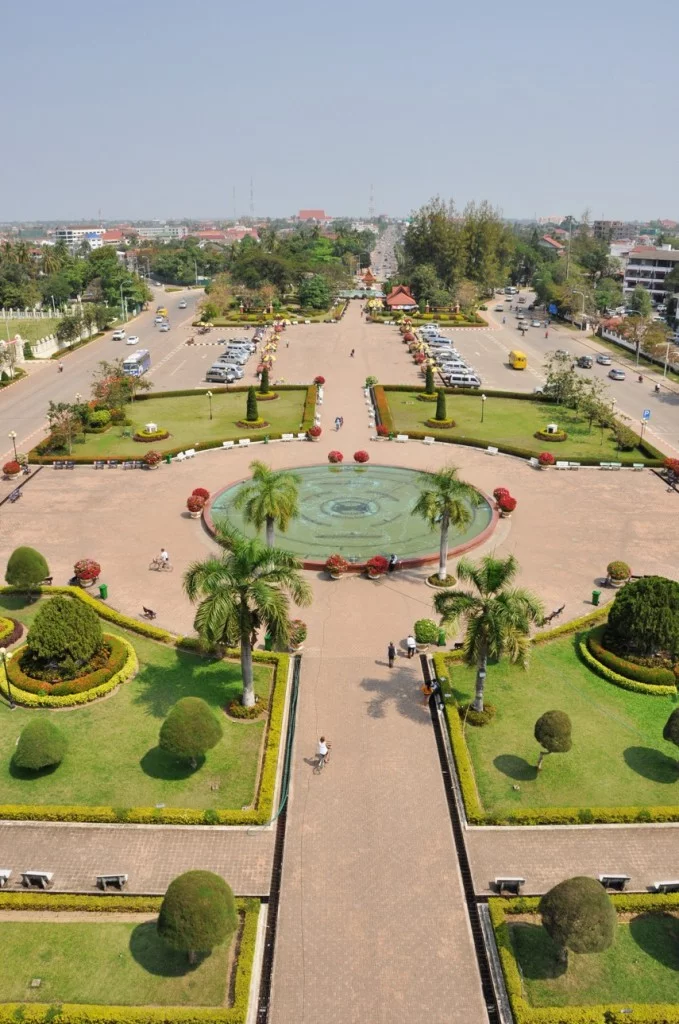
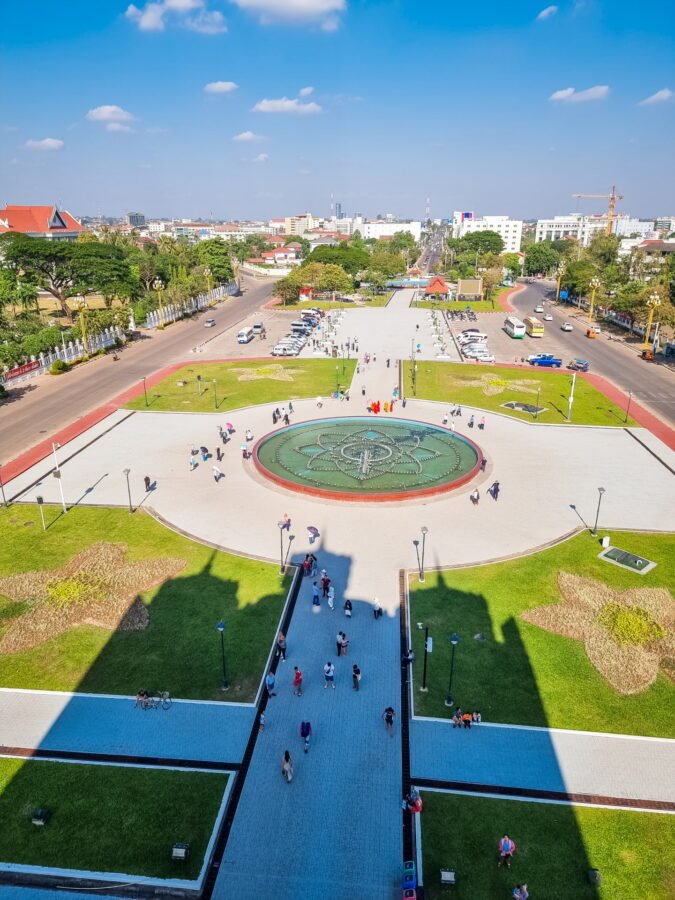
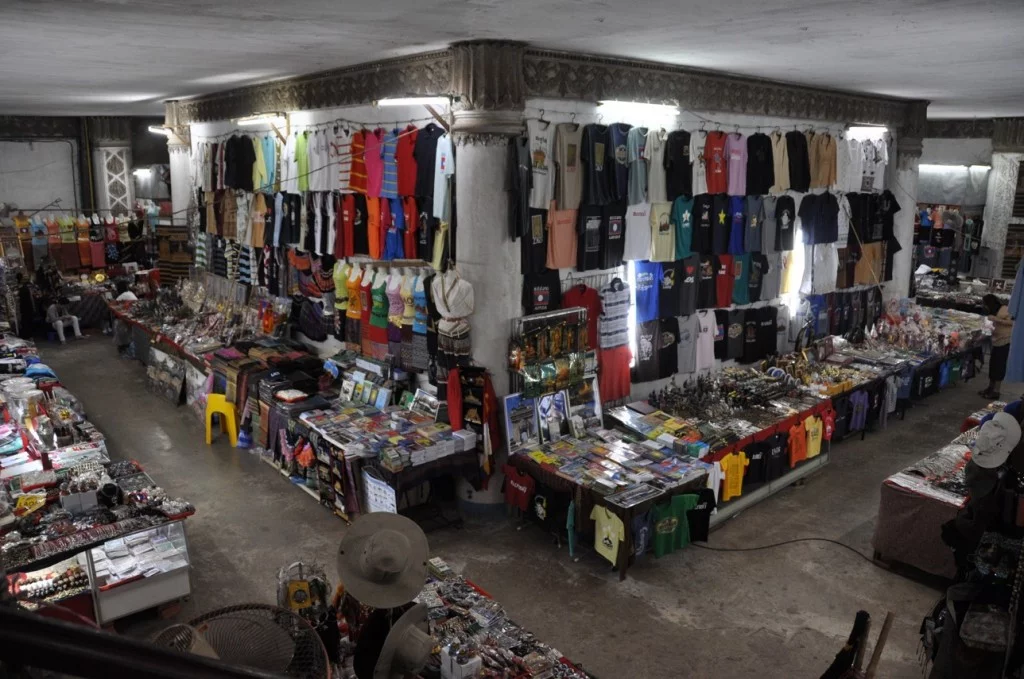

Pha That Luang
Le Pha That luang was my last visit of the day, including all the sites presented so far. Considered the most sacred monument in the country (notably, because it is supposed to contain a hair of Buddha), That luang, which can be translated as supreme stupa, is located slightly set back north of the city center.
It is so important that it appears on the country's coat of arms and banknotes, becoming the official emblem of Laos in 1991. This stupa (what is called in Thailand " chedi ») has a square base and a point that rises to 35 m, the whole is covered with gold paint. The main structure is surrounded by a cloister which again houses a whole bunch of Buddha statues and a Khmer stone statue, representing the last great king ofof Angkor, Jayavarman VII.
Although its history is relatively unknown in detail, excavations carried out in the 30s have brought to light an older structure, assembled with laterite blocks that date back to the 1560th century. Subsequent stupas were built on top of it. What is certain is that shortly after the founding of the city around XNUMX, King Setthathirat had a stupa built on this site.
The latter will be destroyed following the Siamese invasions and rebuilt in its current configuration including a cloister by King Anouvong, to whom we ultimately owe the majority of the "old" buildings visible today. Despite everything, this construction will deteriorate over the years and a first renovation will be carried out by the French in 1901.
A restoration criticized by the locals, reproaching a distance from the original architecture. This is why major works were carried out again by the French at the beginning of the 30s, using the drawings made by the explorer Louis Delaporte in 1866 to give the stupa its original appearance, with a point in the shape of a lotus bud.
The site around That Luang has not really changed since the last time. On the western area by which I arrived, I still notice the presence of the gardens laid out on each side. In front of it still stands proudly a statue of the founder of the city, King Setthathirat, of whom I attended a small impromptu cleaning session on the way out.

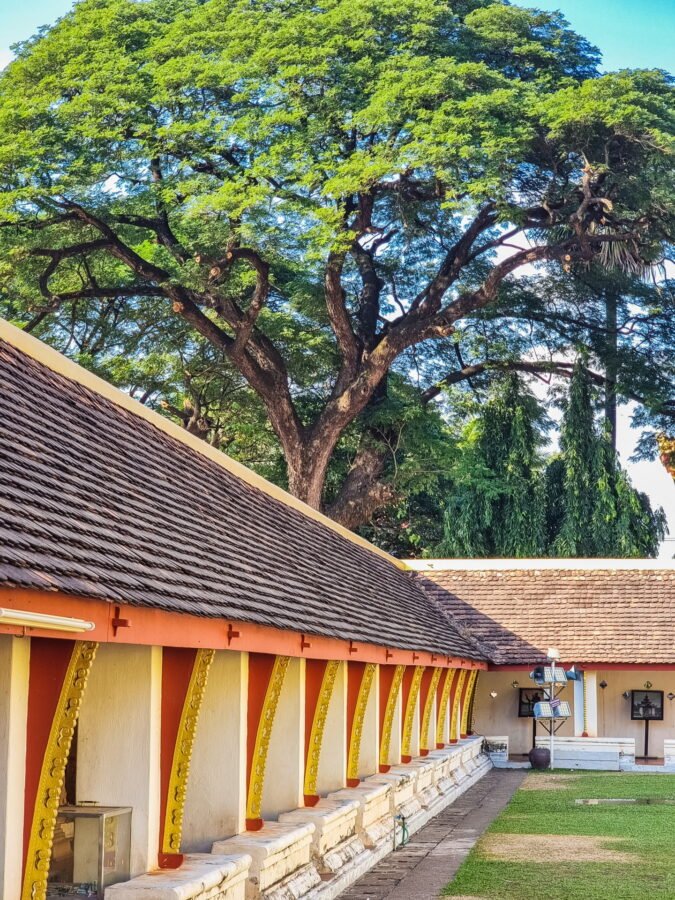




In this same western area, you will cross the enormous square, similar to a landing strip (800 m long!) which is used in particular for the important annual ceremony called Boun Namatsakane Pha That Luang, a huge festival that spans 3 days as the country celebrates all these stupas on the full moon in November.
Buddha Park
The next day I drove a little further out of town and headed 25km east to a site known as Buddha Park, or locally Xieng Khuan. Initiated by a shaman and sculptor called Bunleua Sulilat (from which he is sometimes given the title normally reserved for an important monk: "Luang Pu") in 1958, it is a set of sculptures entirely in concrete, representing divinities and creatures specific to the Hindu and Buddhist religions.
Given the adventures that this day brought me, I wrote an article dedicated to the Buddha Park which you will find below:
Natural Places and Green Spaces
We can't say that Vientiane is a green city, far from it... In fact, apart from Anouvong Park that I detail below (and which is also quite recent), there is almost no "real" park. The quotation mark is used to emphasize the meaning of park, which for me, is a green space with a minimum of trees and plants, and a minimum of benches or space to be able to enjoy the place.
However, you will find many "parks" in Vientiane, but more in the name than in the appearance and their functionality. I want to take as an example one of the most famous in the city, located in the heart of the old city, it is the Namphou ParkThe latter is mainly a fountain (iconic, moreover), surrounded by a lawn.
And again, only recently, because the site has only just been returned to the public after being operated for a decade by a company that had built several restaurants and a skate park around the fountain.
Another example of what is considered a "park" is the small patch of greenery at the end of the esplanade where the Patuxai is located, soberly called "Patuxay Park", there is just a large tree, a few benches and a fountain and that does the trick...
It must be said that if we tend to complain about the lack of parks in Bangkok, Vientiane does even worse... While the WHO recommends a minimum of 9 m², most sources give a ratio of green space per inhabitant around 7 m² (except some sources mentioning a small 1,5 m²) in the Thai capital, when Vientiane does not even exceed 0.26 m² (43 m² to be exact), by comparison, Kuala Lumpur in Malaysia, displays a comfortable 66 m² and Singapore XNUMX m²!
Last example, with basically the only other park I came across in the city, it's the one with the Fa Ngum statue, heading towards the west of the city. And there again, I really have a hard time considering it as such, because it is more of a kind of esplanade, largely more concrete than filled with greenery.

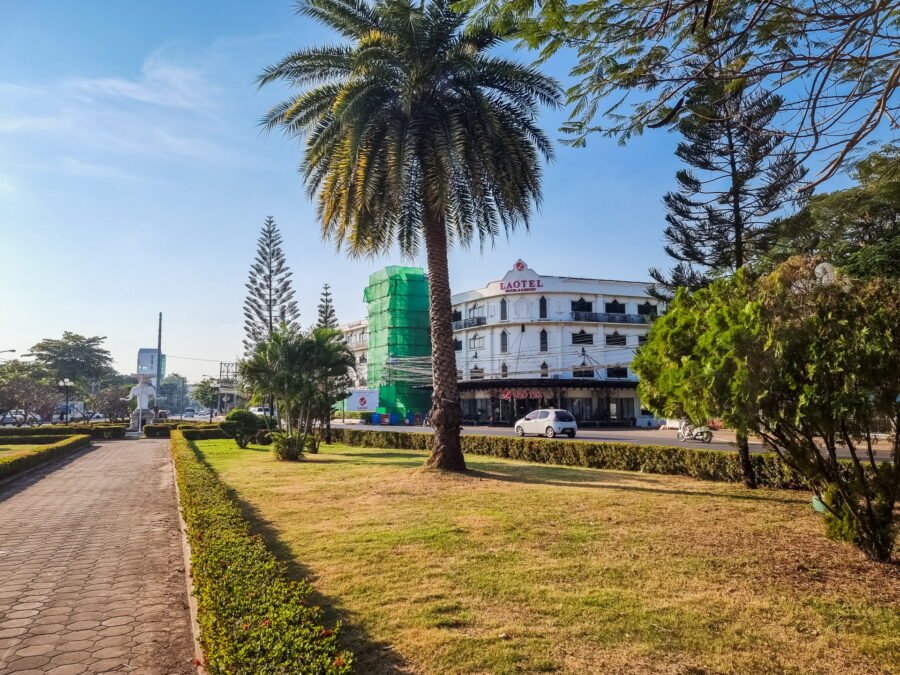
Chao Anouvong Park
So if you are looking for some greenery, apart from getting out of the city, which is surrounded by several hills where you will find waterfalls and places to walk (see below), there is essentially the Chao Anouvong Park where you can get some shade under the foliage of the trees.
This is a recent park, created in 2010 to mark the 450th anniversary of the founding of the city. The park stretches along the banks of the Mekong for more than a kilometer. But the green space itself is quite limited, since its entire western end is less than 50 m wide, and there are more merchant carts on this part than trees since the Vientiane Night Market (between 18 p.m. and 22 p.m.).
To visit it, I parked near the new Chinese temple, built on the side of the road towards the middle of the park, the Ho Kang Temple, whose construction was completed in 2013. I still went to take a look at the temple in question, even though, well, I've seen loads of Chinese temples (you're going to tell me, temples in general too!) but as it is recent, there was no need to admire it from all angles.
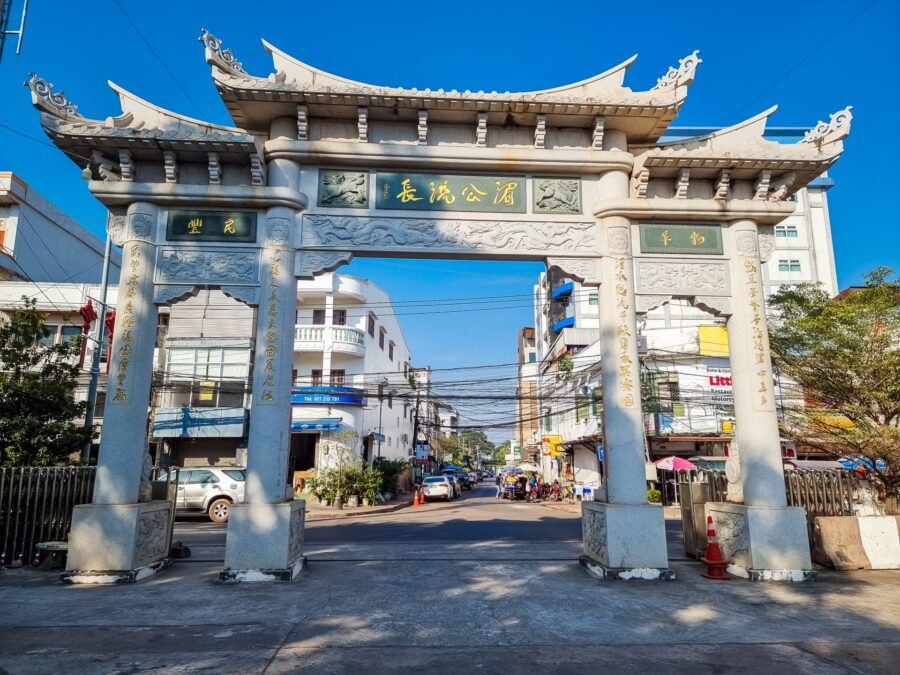



Time to go to the other end, to see the big one statue of king Anouvong, which sits on the axis of the presidential palace (itself at the end of the famous Lane Xang avenue, where the Patuxai is located), I did not come across many people, apart from the recurring sweep of small motorbikes, the merchants who were already preparing their stalls for the evening market.
A few people were relaxing in the park, I also passed some maintenance workers, who were sweeping a corner, but I couldn't help but notice all the plastic and waste lying around here and there. If Thailand is not without its faults in this area, these parks are still much better maintained but also better laid out (but hey, it's not the same standard of living either).
Arriving behind the bronze statue of King Anouvong, I quickly crossed the road to admire the banks, where there are restaurants and markets open in the evening. It was while looking at photos from my previous stay that I realized the change in this area, literally virgin more than 10 years ago (I put the photo on the left for you to compare).

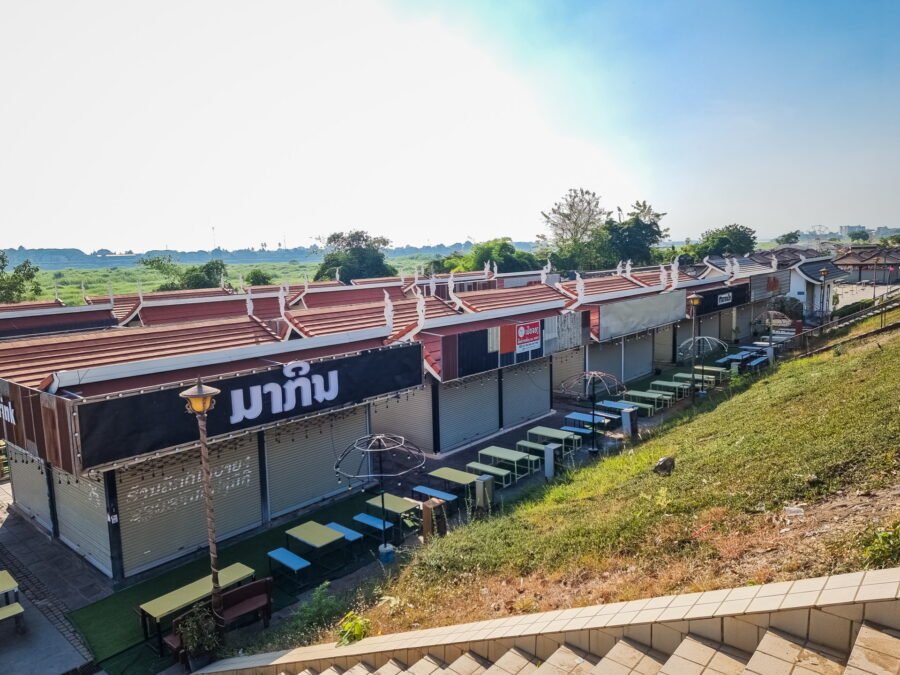
Looking at my photos from 10 years ago, I noticed how quickly trees grow in these regions. I even wrote in my article at the time, and I quote, "The river is bordered by a rather pleasant path, but it is seriously lacking in trees (especially on a day like today, with the heat!)."
You will notice that at that time, I did not even perceive the place as a park, but just an "alley", but that indeed, it gave a very "basic" rendering. Here again, I put a photo for you to compare.
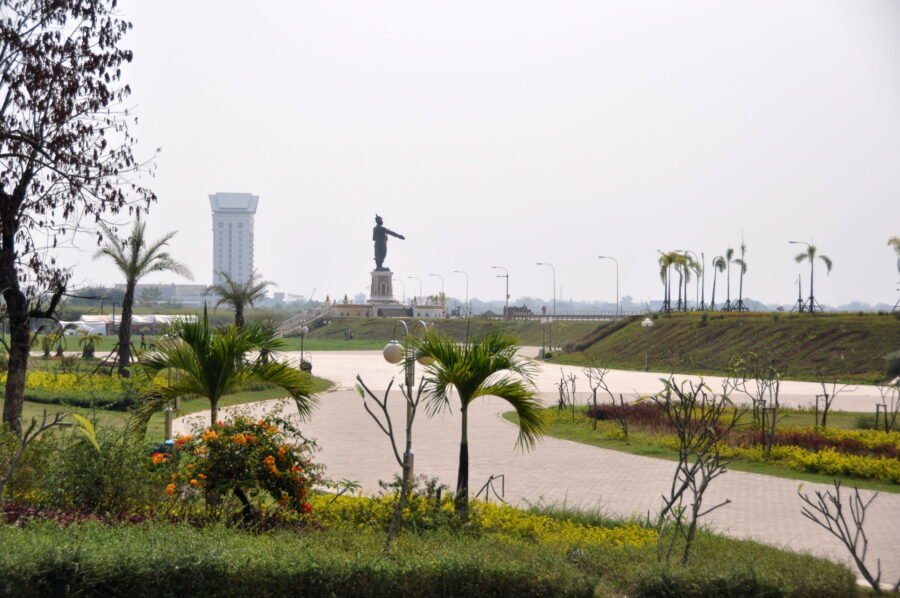
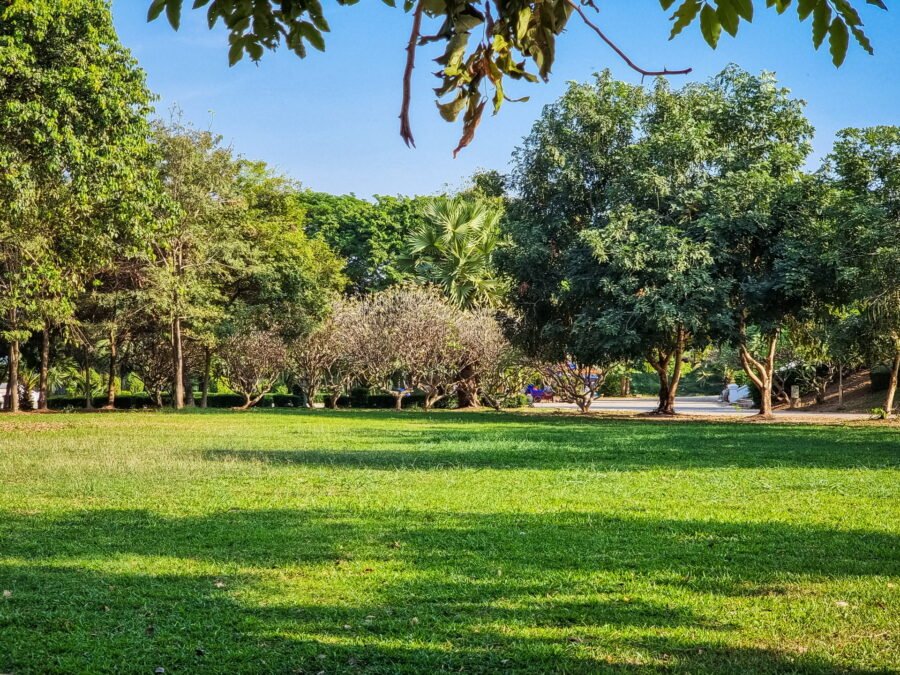
Back in the park, behind the statue, there is a fountain decorated with nagas (the famous snake of Buddhist mythology). In the background you can see the presidential palace, itself in the axis of the large Lane Xang avenue, where the Patuxai is in the middle. Finally, next to it, not very highlighted, there is a small pond with a few water lilies and some facilities for doing exercises.
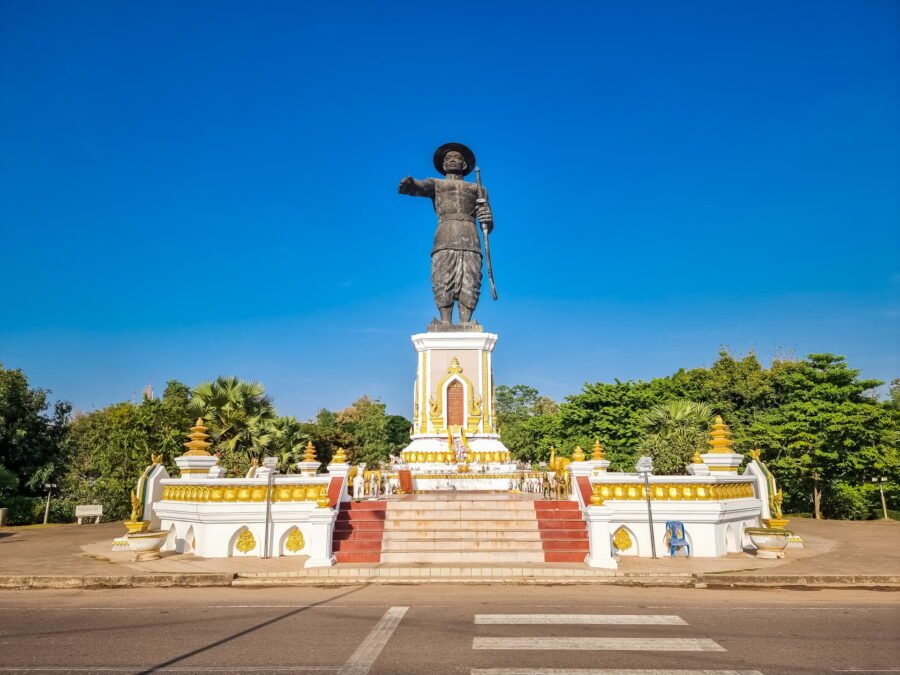



Bonus: Phou Phanang View Points
Because the "green" options in the city itself are more than limited, I took advantage of having a scooter available to go explore the surroundings of Vientiane a little. However, given my bike, I didn't see myself driving 2 hours to get there. With this criterion, while looking for what I could do close to the capital, I came across this point: Phou Phanang View Points
I put it as a bonus, because it is obviously not a must, but if walking does not scare you and you are resourceful and curious like me, it is a suggestion for an outing off the beaten track, close to Vientiane. As this post would have been too long and indigestible, I wrote a full article on this day that I invite you to read if you want to know more about this little walk in nature close to Vientiane:
Gastronomy and Local Markets
International cuisine
Beginning with its recent colonial past, Laos has been influenced in its cuisine by several cultures. There are spices, curries and dishes similar to those of Thailand, soups and fermentation techniques specific to Vietnam, or even trade interactions with China which introduced and adapted various noodle dishes.
For my part, of course, it is above all the French influence that I appreciate. The French occupation brought elements such as the consumption of the baguette, with sandwiches that can be found almost everywhere, as well as pastries, and of course, the art of savoring a good coffee. The streets of Vientiane are therefore full of bakeries, cafes or French restaurants scattered throughout the city.
I'm not going to lie to you, I eat very little Laotian food when I'm in Laos... it's a cuisine quite close to what you find in Thailand, so I'm more in "break" mode. And besides French cuisine with the two restaurants mentioned in my article (Tango and La Terrasse if you've read it), there are quite a few Japanese or Italian restaurants, some of which were just delicious (I'm thinking of the excellent PDR - Pizza da Roby).
As it is also a coffee producing country (especially in the region of the famous Bolovens plateau, further south of the country), Laotians like to drink it and therefore, like its Thai neighbor, you can find coffees everywhere in the streets of Vientiane. On the other hand, having tested several, it is not easy to find one as good as in Thailand.


Local specialties
Just to complete the story, here is a list of some typical Laotian dishes:
- Laap (or Larb)
- Description: This is a salad made with minced meat (usually chicken, beef, duck or fish), mixed with fresh herbs, spices, lime juice, and sometimes tripe, traditionally served with sticky rice.
- Note: Laap is often considered the national dish of Laos, and its freshness and balanced flavors make it a very popular option. It is a dish that is found a lot in Thailand and especially in Issan, the northeastern region, which borders Laos.
- Tam Mak Hoong (or Green Papaya Salad)
- Description: This spicy salad is made with grated green papaya, tomatoes, long beans, peanuts, garlic, chili peppers, lime juice and fish sauce.
- Note: This is a fresh and spicy dish that often accompanies other Laotian dishes. It is called “Som Tam” in Thailand.
- Khao Piak Sen
- Description: This is a rice noodle soup served with broth, chicken or beef, and often garnished with green onions, cilantro, and fried shallots.
- Note: This dish is particularly popular as a breakfast or light meal.

This is what chicken larb looks like. FlickR photo Bryon Lippincott.
I could also cite the Or Lam, a kind of vegetable stew, Mok Pa, fish cooked with curry paste and steamed while wrapped in a banana leaf or the Ping Kai, grilled chicken marinated in a sauce made with garlic, lemongrass and coriander, served with a hot sauce.
Local markets
The most famous market is the “ Talat Sao", which means morning market. It is basically a market that has been present in Vientiane since the 60s. Talat Sao was a rather typical covered market, but because the city is looking to modernize, it was completely razed in 2015. As a result, the name Talat Sao was "transferred" to a neighboring building built around 2010, in which you can find everything but which has nothing to do with the original Talat Sao.
So, apart from the small evening market on Hengboun Street (it doesn't have a specific name and is simply listed as " Night market with food » on Google Maps), I haven't really seen any, although I have already mentioned the Vientiane Night Market at the end of Anouvong Park.
I am taking advantage of this little section to mention the shopping centers of Vientiane, which I was curious to take a look at. One of them, the Parkson, is so recent that only the ground floor is finished and part of the 1st floor, the rest is still desperately empty…
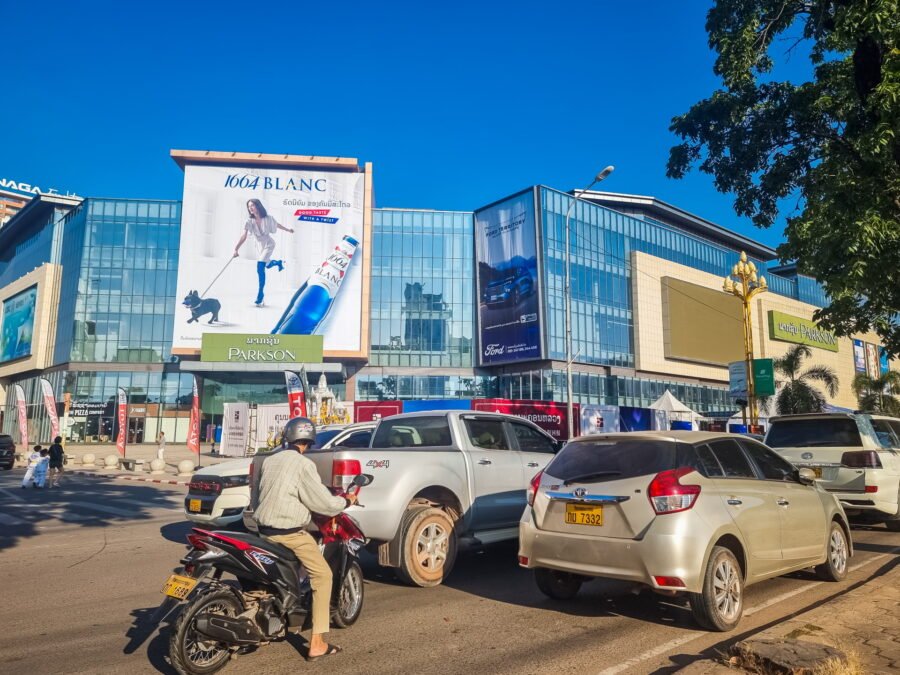
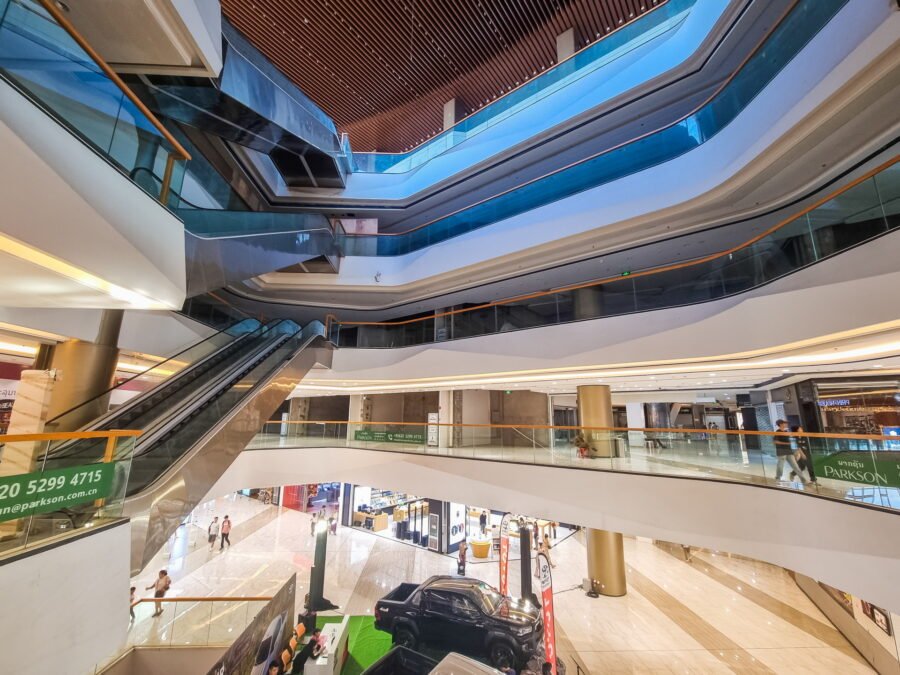
On the other hand, although it is not completely open, it gives a feeling of modernity unlike its neighbor, the Vientiane Center, which, although it was built not even 10 years ago, does not have the same presence. I went to have a quick look upstairs, I was looking for water and went to the "food center" but you had to change your money to get coupons, so I was lazy, I finally found it just across the street...
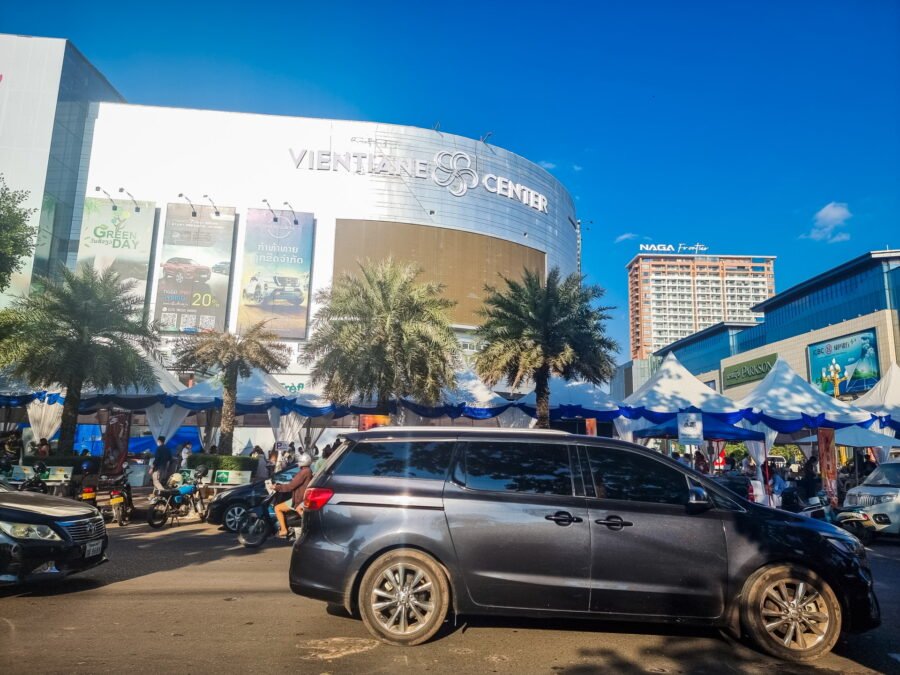

Practical advice
Best time to visit Vientiane:
Since it is a city, you can visit it almost all year round, but it will obviously be more pleasant in the dry season, which runs from November to early May. But if we break down the seasons a bit, here is what to expect:
From November to February (the “cool” and dry season) :
- This time is generally considered the best time to visit Vientiane due to its pleasant climate, with cooler temperatures (although this is relative) and less humidity.
- This is obviously peak tourist season, so expect to see more people and possibly slightly higher accommodation rates.
From March to May (hot season) :
- These months can be hot and dry, with temperatures often exceeding 35°C.
- If you can stand the heat, this is a time when you might find fewer tourists and enjoy more affordable accommodation rates.
From June to October (rainy season) :
- Vientiane receives heavy amounts of rain during these months, although the showers can be short but intense.
- If you don't mind the occasional rain, this time can offer lush, green scenery all around.
- Accommodation rates are usually lower during this season, and you can also enjoy a quieter atmosphere.
Transportation in Vientiane
Although Vientiane has an international airport, located just 5km west of the city centre, and a new train station thanks to the fast train from China, it is likely that the majority of you will arrive in the Laotian capital by bus.
The bus station is located behind the Talat Sao. Unfortunately, this terminal, the " Talat Sao Bus Station-Laos", remains unfinished, partly reflecting the country's economic challenges. If your itinerary includes continuing to Thailand, note that the ticket office is located at the corner of NongBone Street and Khouvien Boulevard, near a small grocery store (you can check the exact location on Google Maps).


To get around town, you will have the traditional "Sam Lo", the local tuk tuk, of which there is now a modern version, orange electric tuk tuks that I came across everywhere. However, as I only traveled by scooter, I cannot provide detailed information on the prices of these tuk-tuks.
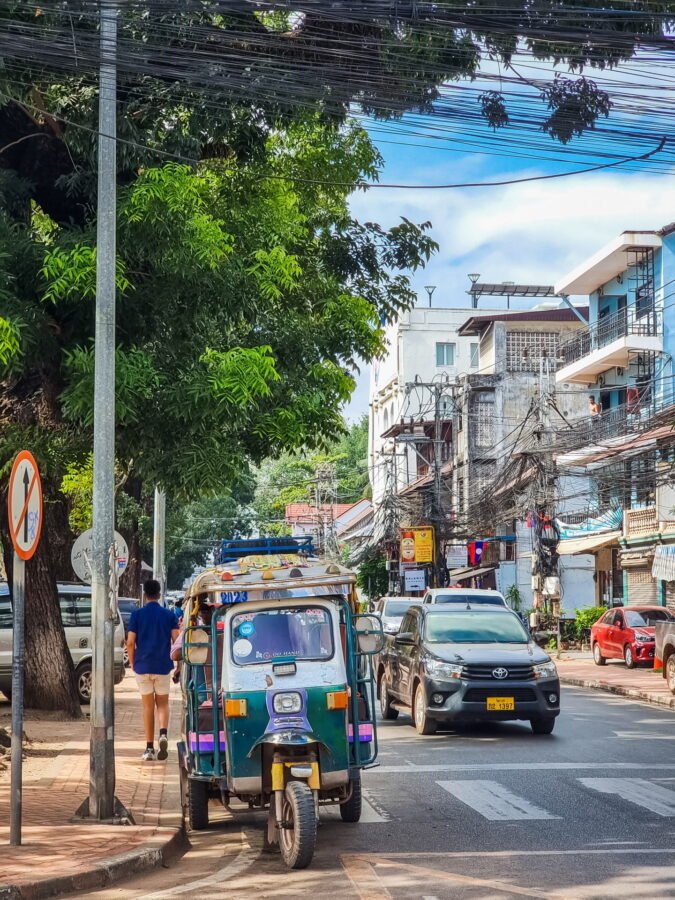

Speaking of scooters, I'll go into more detail my experience in another article. However, a practical tip for those considering renting a scooter: plan to leave your passport as a deposit, even if it may seem like an inconvenience. This is often the standard practice to secure the rental.
Afterwards, in absolute terms if you are a walker, it is possible to see the essentials on foot, which is what I did during my first visit to Vientiane more than 10 years ago. To give an idea of the distance, it takes just over 3 km to reach That Luang, the site furthest from the center, from Wat Phra Kaew.
Where to stay in Vientiane
An article about visiting Vientiane would not be complete without discussing accommodation options.
I have already mentioned the small guesthouse tested 10 years ago, the Heuan Lao Guesthouse, with the little gentleman and his cats, and if it remains a valid cheap option, due to its slightly off-center side and its not always impeccable cleanliness, I will rather direct you towards the last two tested.
Since I was staying for a week, rather than staying in just one hotel and because I was hesitating between the two when I was finalizing my choice, I simply said to myself, why not try them both! I just preferred the 2nd because it was cheaper, by splitting two nights at the first and the rest (4 nights) at the second.
If I had to sum up, the first hotel was a little more "classy", spacious, with a breakfast that was certainly quite basic but sufficient, but therefore more expensive, almost double compared to the Moonlight.
As for the latter, the room is quite small, but the welcome is warmer, twice as cheap and without breakfast.
To find many more options, you can give the blog a helping hand by booking your accommodation via the search tool below:
Conclusion
Vientiane will not please everyone, I know that many find it too "boring", because it gives off a feeling of there not being much, especially since unfortunately for it, everything is ultimately quite modern in the attractions since everything has been rebuilt or almost...
Although it is the largest city in the country, it has a rather peaceful feel, especially if you are usually more of an urban person and used to big, dynamic metropolises. For me, who has lived in a bustling city like Bangkok for 15 years, the difference is obvious.
However, there are still some attractions that deserve, like any capital, to stop there for at least 2/3 days. Whether it is your drop-off point on arrival or on the way between the north and the south of Laos, Vientiane should still be part of your itinerary in Laos. It is a city that should appeal to those who flee the big Asian megalopolis, sometimes confusing, too vibrant and noisy (or those who do not like too big cities at all).
Vientiane is almost like a big village, or failing that, a small provincial town, a balance between a sufficient choice of cafes, restaurants, hotels or even massages, something to keep you busy with attractions of national importance, but an overall aspect remaining calm and relaxed so as not to lose your bearings. And it is better to enjoy it because it remains a capital, so we feel a desire to develop and if we stay far from a Kuala Lumpur ou Singapore



